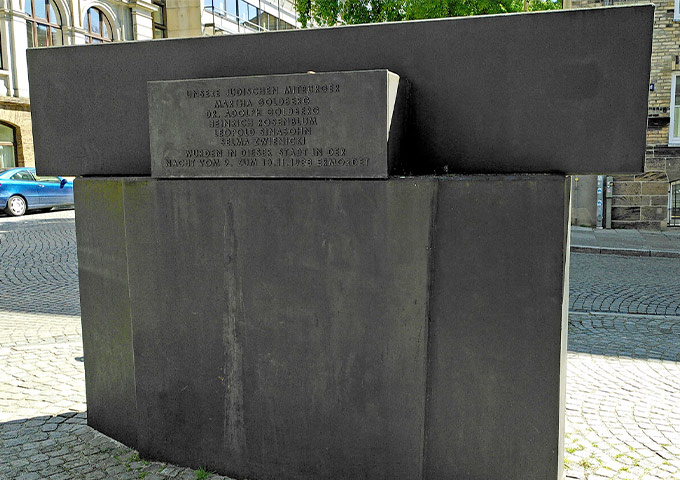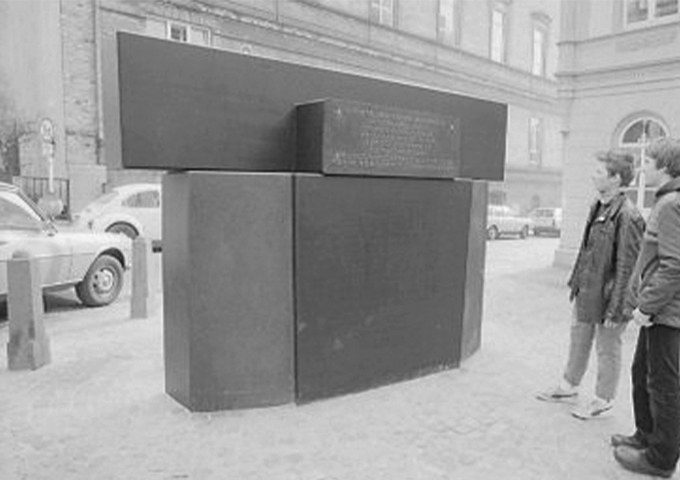Memorial for the Victims of the November Pogroms 1938
How can you call this atonement?
This slab of solid concrete:
rectangular blocks stuck together,
stuck together and painted black –
a dull, flat, dead black with a matte finish –
Nothing lives here. This is just dead concrete
covered with dead paint.
This is a monument. Who is it for?
Do the dead really care?
There’s a hollow metal plate
that bears the names of the victims,
the innocent men and women
murdered at night in their own homes.
But the names are hard to read,
there is no contrast.
Everything has been painted
in a faded black. And so the victims
have become invisible, of no consequence,
just as they were in 1938.
The design was meant to be timeless.
The design was meant to be simple:
minimalist, straightforward
and completely unadorned.
What is timeless? What is for eternity?
What does it mean
for something to be timeless?
Abiding? Ageless? Dateless? Enduring?
But this monument looks like a half-hearted,
begrudging gesture. There is a feeling
of emotionless neutrality.

The artist had planned for a bench
to be here, just so, right
in front of the monument. It was to be
a place to sit, to contemplate –
But who would want to sit here,
by this desolate street corner?
Who would want to sit here
and stare at such banal ugliness?
In the end the artist died
before the monument was erected –
and the bench was left out.
Schoolchildren come and go,
people pass by on their way to wherever –
but how many of them know
anything about this monument?
Still, there are those who place flowers here
while others place small stones
along the ledge.
Sometimes there are visitors:
On the 27th of May 1997
Rabbi Dr. Jacob Gerd Wiener
from Silver Spring, Maryland,
born Koppel Gerd Zwienicki in Bremen
in 1917, recited the Kaddish
for his mother, Selma Zwienicki
and for all the dead.

Only the victims can forgive you
if they choose to.
A few years later
someone painted white swastikas
across the dull blackness.
A few years later during construction work
a portable toilet was placed against
the monument. Nowadays
dogs urinate on it,
someone has just vomited on it –
And yet there are those who still
place flowers here, while othersplace
small stones along the ledge.
What is timeless?
What is imperishable?
And so I tell you, what is timeless
is the Kaddish that Dr. Jacob Gerd Wiener
recited for the dead. What is timeless
is the soul’s memory of the sea and the sky.
What is timeless is the soul’s memory
of a bird’s song it has made its own.
What is timeless is the soul’s memory of life.
And so I tell you what is timeless
is the soul’s song of praise
as it leaves its dying body.
Sujata Bhatt
